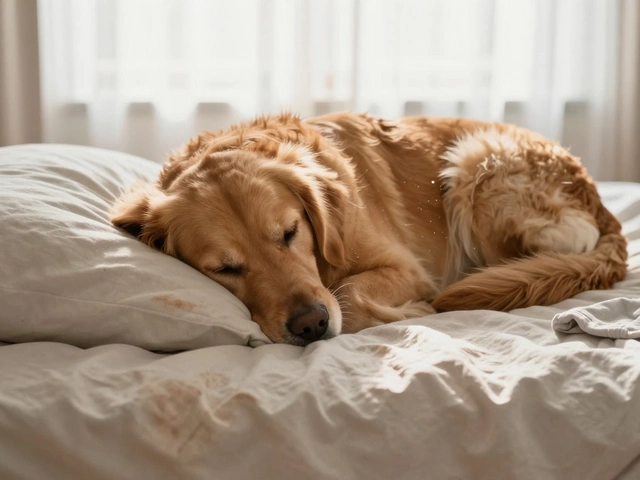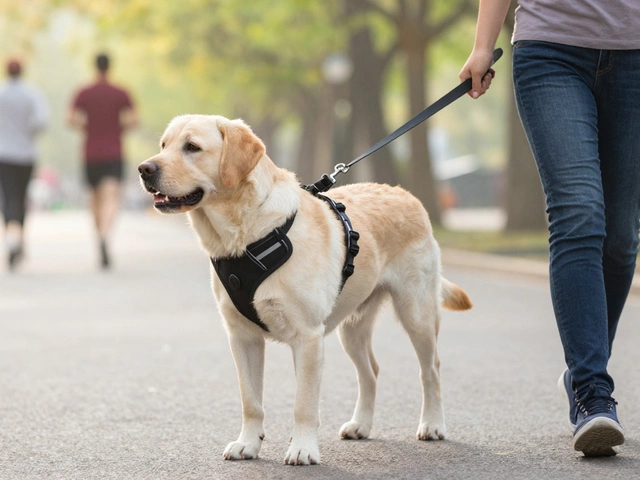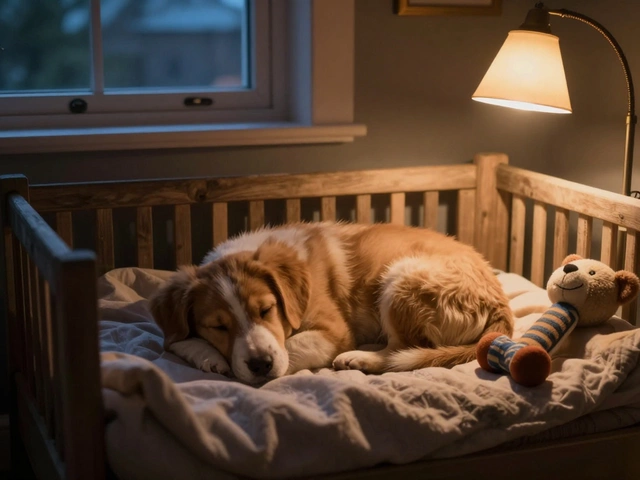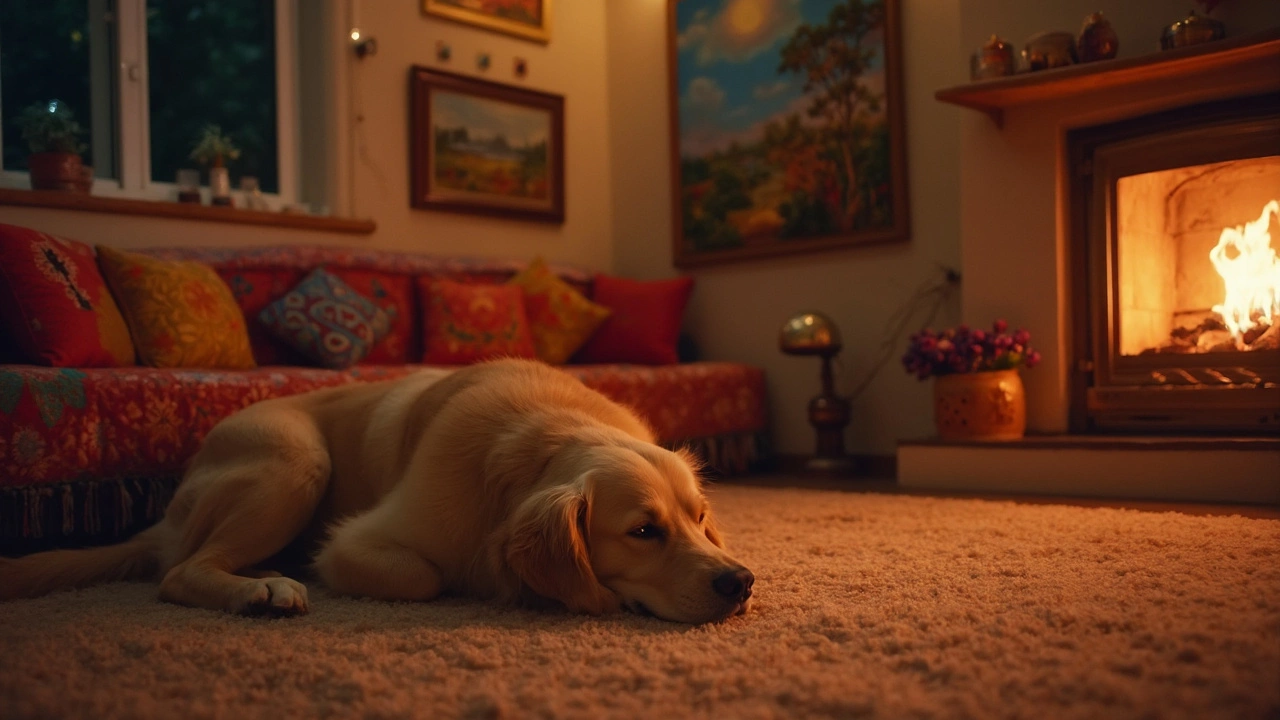
Ever wondered whether your dog should sleep with their collar off? You're not alone. It's one of those questions that sneaks up on pet owners at bedtime. Just think about comfort—how would you like snoozing with a tight necklace around your neck every night? In many cases, dogs might prefer to go collar-free when they hit the hay.
For starters, let's think about comfort. Collars can trap fur, causing mats or irritation, especially if they get wet. It's similar to wearing a belt tighter than needed. Removing the collar may allow your dog a full range of neck movement while they dream about chasing squirrels or munching on treats. Plus, a collar-off policy at night could help alleviate any skin irritations formed by constant contact.
And there's more to consider. Did you know that sleeping with a collar can, on occasion, pose safety risks? If your pup's collar isn't the right fit or they tend to tussle around a lot, the collar could become a snag hazard—like getting caught on a crate or furniture, leading to potential accidents.
- Why Consider Removing the Collar
- Risks of Sleeping with a Collar On
- Benefits of Sleeping Collar-Free
- Best Practices for Dog Collars
Why Consider Removing the Collar
When it comes to doggy bedtime, there's more at play than just comfort. Letting your furry friend sleep without their collar can offer several benefits you might not have thought about. After all, wearing a collar all day, every day, can have its downsides.
Comfort and Skin Health
Dogs, like us, can enjoy the freedom of a relaxed neck. Constant collar use can lead to skin irritation or fur matting. With certain materials, especially if they get damp or muddy, dogs may develop rashes or sore spots under the collar. By taking it off at night, you give their skin a chance to breathe.
Reducing Noise and Stress
If you have a jingly tag, you know they can be noisy, especially when your pup is tossing and turning in their sleep. Removing the collar can create a quieter, more relaxed environment for both you and your dog. Less noise means less stress, which is always a good thing.
Preventing Accidents
There's also the risk factor. Collars can catch on crates, fences, or furniture. While it's unlikely, no one wants to wake up to a stuck and distressed pup. Leaving the collar off when supervision is minimal can reduce this risk. Pet care is all about weighing those risks and rewards.
Special Cases
If your dog has a habit of scratching, removing the collar can prevent damage to the skin that might occur from persistent itching. Plus, let’s not forget those pups with extra rolls! A collar off might be essential for those maintaining their hygiene and skin health.
Whether your reason is comfort, safety, or health, considering some collar-free time could be a simple but meaningful change in your dog care routine.
Risks of Sleeping with a Collar On
So, what's the big deal about a dog sleeping with a collar? At first glance, it might seem harmless, but there are a few risks worth considering. Let's dive into them and see why it might be a good idea to let your pup snooze collar-free.
Choking Hazards
One of the most pressing concerns is the risk of choking. A collar that gets caught on something can lead to panic, potentially tightening around their neck—a scenario no pet owner wants. Dogs that move around a lot in their sleep or share a bed with other pets might find themselves at greater risk.
Skin Irritation and Hair Loss
Constant collar wear can cause irritation or even hair loss in some dogs. The friction and pressure of a tightly worn collar, especially if damp or made from rough materials, can become uncomfortable over time. This irritation can result in red patches or hair rubbing off around the dog's neck.
Risk of Injury
A collar snagging on a crate or furniture isn't just a choking hazard but can also lead to injury. If your dog tries to pull away forcefully, they might strain their neck or shoulders. Plus, if they experience anxiety overnight, discomfort from the collar could add unnecessary stress.
Reduces Quality of Sleep
Believe it or not, sleeping with a collar can actually disrupt your dog's sleep. Much like how poorly fitted pajamas might keep us up, a collar that's too tight or bulky can prevent your pup from getting a good night's rest. Noise from tags jingling can also be a disturbance, affecting both the dog's and your own sleep quality.
Given all these risks, it's definitely something to think about. There are simple solutions like having a dedicated sleep collar that's softer or sized differently. At the end of the day, it's all about keeping your furry friend safe and happy.
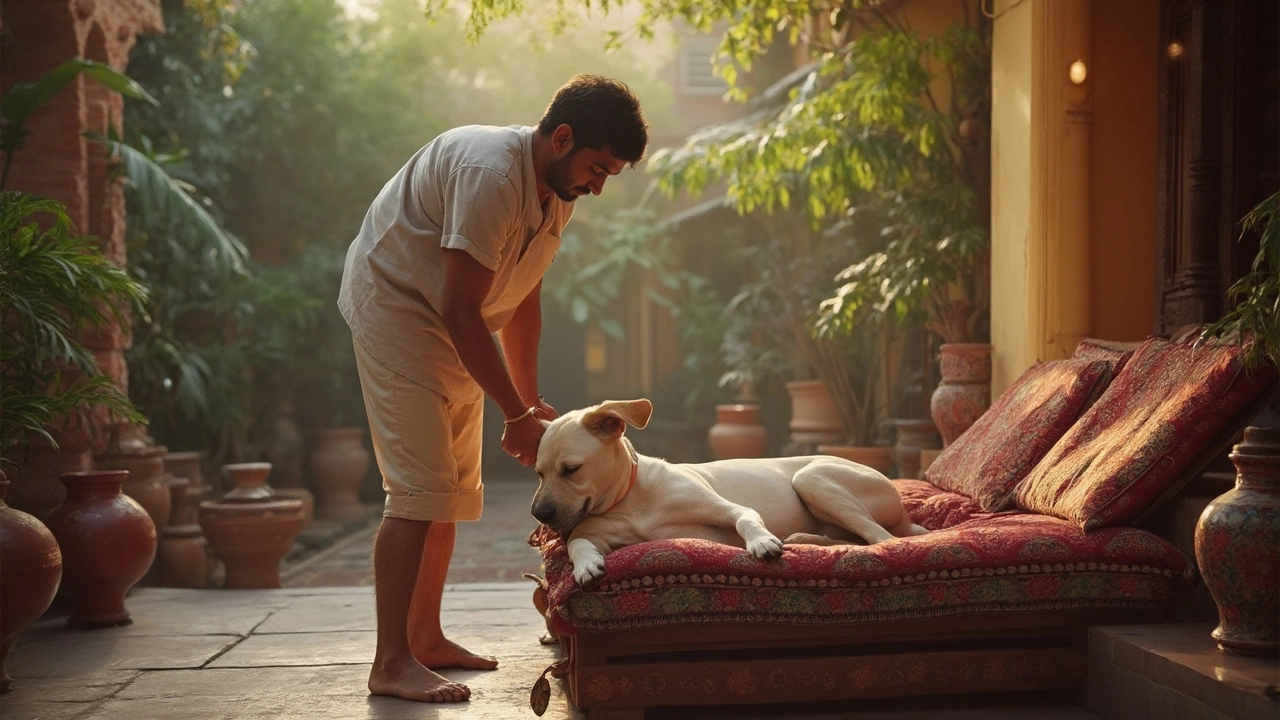
Benefits of Sleeping Collar-Free
Thinking about letting your dogs sleep without their collars? It might actually be a good move for several reasons. Let’s dig into the benefits.
Comfort Is Key
One of the biggest perks for your furry buddy is comfort. Without a collar, your dog can experience a more comfortable, unrestricted sleep. Imagine being able to twist and turn without getting your collar caught or pressing down awkwardly. Removing it can mean the difference between a restless night and a peaceful snooze.
Skin Health and Protection
Taking the collar off allows your dog's skin to breathe and can help prevent rashes. It reduces the risk of trapped moisture under the collar, especially important for breeds with lots of fur around the neck. skin irritation could lead to scratching, which is something neither you nor your pet should have to deal with frequently.
Safe and Sound
Allowing your dog to sleep without a collar can also mitigate safety risks. There's less chance of them getting caught on anything during their sleep, which minimizes the risks of accidental strangulation or injury. Those night-time escapades to ‘fetch a drink from the water bowl’ wouldn't involve any unwanted snagging incidents.
Immediate Identification
While collars are good for tagging your dog, keeping them off at night doesn’t have to mean unprotected. You could use alternate methods, like microchipping, for times when collars are off. That way, your dog stays identifiable without the constant collar pressure.
Taking off your pooch's collar at night gives them the chance to wind down just like we do when we kick off our shoes. It’s a simple routine tweak that can give your pet care strategy a little upgrade.
Best Practices for Dog Collars
Finding the right collar for your dog isn't rocket science, but it's definitely something that deserves a bit of thought. Let’s talk about a few things you should keep in mind when it comes to dog collars.
Choosing the Right Fit
A well-fitted collar is the first step. You don't want it too tight or too loose. A common rule of thumb is using the 'two-finger test.' You should be able to slide two fingers comfortably between the collar and your dog's neck. This way, it provides security without choking your furry friend.
Material Matters
When choosing materials, think about your dog's lifestyle. If your pup is a water-loving enthusiast, go for a waterproof collar that won't chafe. Nylon and leather are popular, but they each have different benefits. Leather is gentle on the skin, while nylon often stands up better against the elements.
Proper Regular Checks
Don't just set it and forget it. Collars need regular checks. As your dog grows or if they gain or lose weight, adjustments are necessary. Also, inspect the collar for signs of wear and tear—you don’t want a faulty clasp leading to a runaway dog!
| Material | Pros | Cons |
|---|---|---|
| Nylon | Durable, weather-resistant, budget-friendly | Can cause abrasion if too tight |
| Leather | Classic look, gentle on skin | Requires conditioning, costlier |
When to Remove
Collars don't always have to stay on. If your dog is indoors or resting, it might be a great time to take it off. This gives their neck a breather and reduces the risk of hair matting or skin irritation.
- During playtime when there's no need for ID tags
- When alone in a crate to prevent snagging
- While grooming or bathing
So, remember, keeping your pup's collar in check benefits their comfort and safety. With these tips in your back pocket, you can ensure your canine companion is both trendy and secure at the same time.

